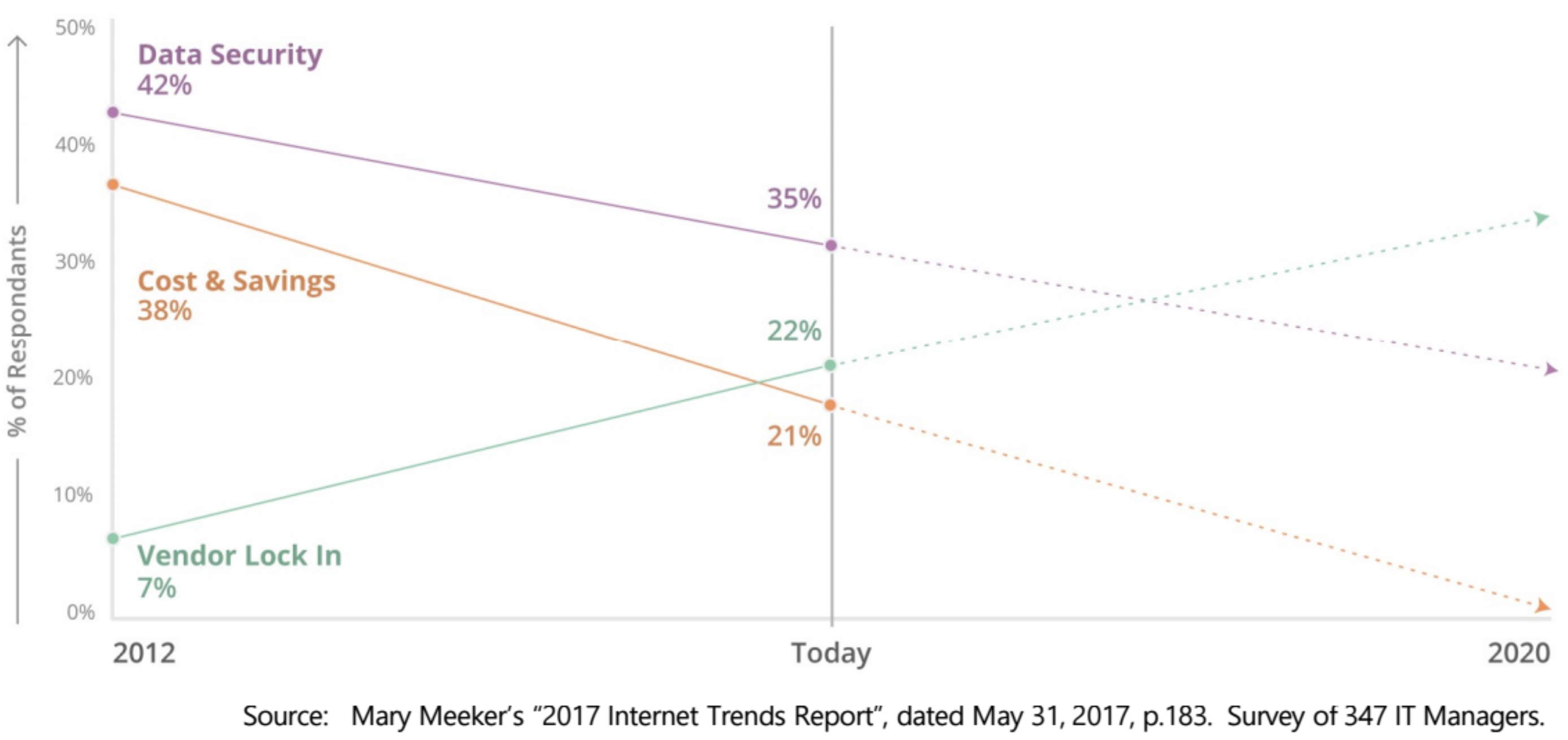Terminology Tuesday Presents: Microservices
Microservices is the philosophy of designing software programs by breaking what used to be a singular function or command into multiple components, known as services. The ultimate goal is to reduce complexity and increase speed (basically the goal of anything nowadays).
Think of Thanksgiving. A traditional approach would have the same person cook the entire meal. And likely even do all the dishes. Think of a world instead where you can assign different individuals (and ovens!) for cooking the turkey, gravy, mashed potatoes, stuffing and anything else that may grace your table.

Microservices delivers on this dream but also takes the principle to the next level. Not just breaking up the request (multi-course dinner) into multiple services (turkey, salad, not burning the garlic bread) but making them really really minute.
“Services” that used to be inherently linear can now happen concurrently. To go back to our Thanksgiving example, you could have the potatoes peeled at the same time they’re being mashed. If we were able to avoid running into one another (part of the magic of software over families in kitchens) everything would become very efficient.
Want Continue reading
Talari Hires New CEO, Moves to 100% Channel Model
 The new CEO has experience with selling companies.
The new CEO has experience with selling companies.
Kubernetes to Power AT&T’s Next-Gen Integrated Cloud
 OpenStack will remain at the core of AIC, but Kubernetes will become the operational template.
OpenStack will remain at the core of AIC, but Kubernetes will become the operational template.
Palo Alto Takes Share From Cisco, Check Point, Sees Revenue Grow 27% in Fiscal 1Q
 The company added 2,500 new customers in the quarter.
The company added 2,500 new customers in the quarter.
Capital One Critical Stack Targets Container Security
 The platform is compatible with open source container orchestration projects, including Kubernetes.
The platform is compatible with open source container orchestration projects, including Kubernetes.
VMware Plans to Pilot Blockchain Technology in 2018
 Company envisions its tech will eliminate the middleman.
Company envisions its tech will eliminate the middleman.
OVH Bursts into US Market with Dedicated Private Cloud
 Look for OVH public cloud offerings in the U.S. in early 2018.
Look for OVH public cloud offerings in the U.S. in early 2018.
Dell EMC Q&A: Open Networking 2.0 – Disaggregating the Software Stack
 Thanks to all who joined us for the Dell EMC Webinar: Open Networking 2.0 – Disaggregating the Software Stack. During the webinar Dell EMC discussed the architectural elements of the modern networking software stack and the role of open source technologies in it. After the webinar, we took questions from the audience. Read the full... Read more →
Thanks to all who joined us for the Dell EMC Webinar: Open Networking 2.0 – Disaggregating the Software Stack. During the webinar Dell EMC discussed the architectural elements of the modern networking software stack and the role of open source technologies in it. After the webinar, we took questions from the audience. Read the full... Read more →
Thoughts on Open/R
Since Facebook has released their Open/R routing platform, there has been a lot of chatter around whether or not it will be a commercial success, whether or not every hyperscaler should use the protocol, whether or not this obsoletes everything in routing before this day in history, etc., etc. I will begin with a single point.
If you haven’t found the tradeoffs, you haven’t looked hard enough.
Design is about tradeoffs. Protocol design is no different than any other design. Hence, we should expect that Open/R makes some tradeoffs. I know this might be surprising to some folks, particularly in the crowd that thinks every new routing system is going to be a silver bullet that solved every problem from the past, that the routing singularity has now occurred, etc. I’ve been in the world of routing since the early 1990’s, perhaps a bit before, and there is one thing I know for certain: if you understand the basics, you would understand there is no routing singularity, and there never will be—at least not until someone produces a quantum wave routing protocol.
Ther reality is you always face one of two choices in routing: build a protocol specifically tuned Continue reading
OpenStack and CITC – Creating and learning about OpenStack networking
Part 1 – Examining the existing network
In my previous post, I was playing around with Cumulus in the Cloud (CITC) and how it was integrated with OpenStack. Now that I was playing with OpenStack in CITC, I wanted to dive deeper into the networking specific technology.
In this blog post I will be discussing how I leveraged a flat network to initially create simple instance deployments. Then I’ll dive more deeply into how I created a VXLAN network for my OpenStack instances to create more scalable east-west communication. In the previous post I used the CITC console as my primary interface for configuration. This time I will be using an SSH client and the direct SSH information, as the outputs I’m gathering have wider width that is easier to obtain via an SSH client.
To do so, I just clicked the SSH access button on the right hand side of the GUI. This provided me with the username, password and IP address that would allow me to use my own SSH client to connect to the CITC infrastructure.
For the uninitiated, here is a great intro doc into OpenStack networking. In addition, my colleague Eric Pulvino pointed me Continue reading
Living In A Multi-Cloud World

A few months ago at Cloudflare’s Internet Summit, we hosted a discussion on A Cloud Without Handcuffs with Joe Beda, one of the creators of Kubernetes, and Brandon Phillips, the co-founder of CoreOS. The conversation touched on multiple areas, but it’s clear that more and more companies are recognizing the need to have some strategy around hosting their applications on multiple cloud providers.
Earlier this year, Mary Meeker published her annual Internet Trends report which revealed that 22% of respondents viewed Cloud Vendor Lock-In as a top 3 concern, up from just 7% in 2012. This is in contrast to previous top concerns, Data Security and Cost & Savings, both of which dropped amongst those surveyed.

At Cloudflare, our mission is to help build a better internet. To fulfill this mission, our customers need to have consistent access to the best technology and services, over time. This is especially the case with respect to storage and compute providers. This means not becoming locked-in to any single provider and taking advantage of multiple cloud computing vendors (such as Amazon Web Services or Google Cloud Platform) for the same end user services.
The Benefits of Having Multiple Cloud Vendors
There are Continue reading